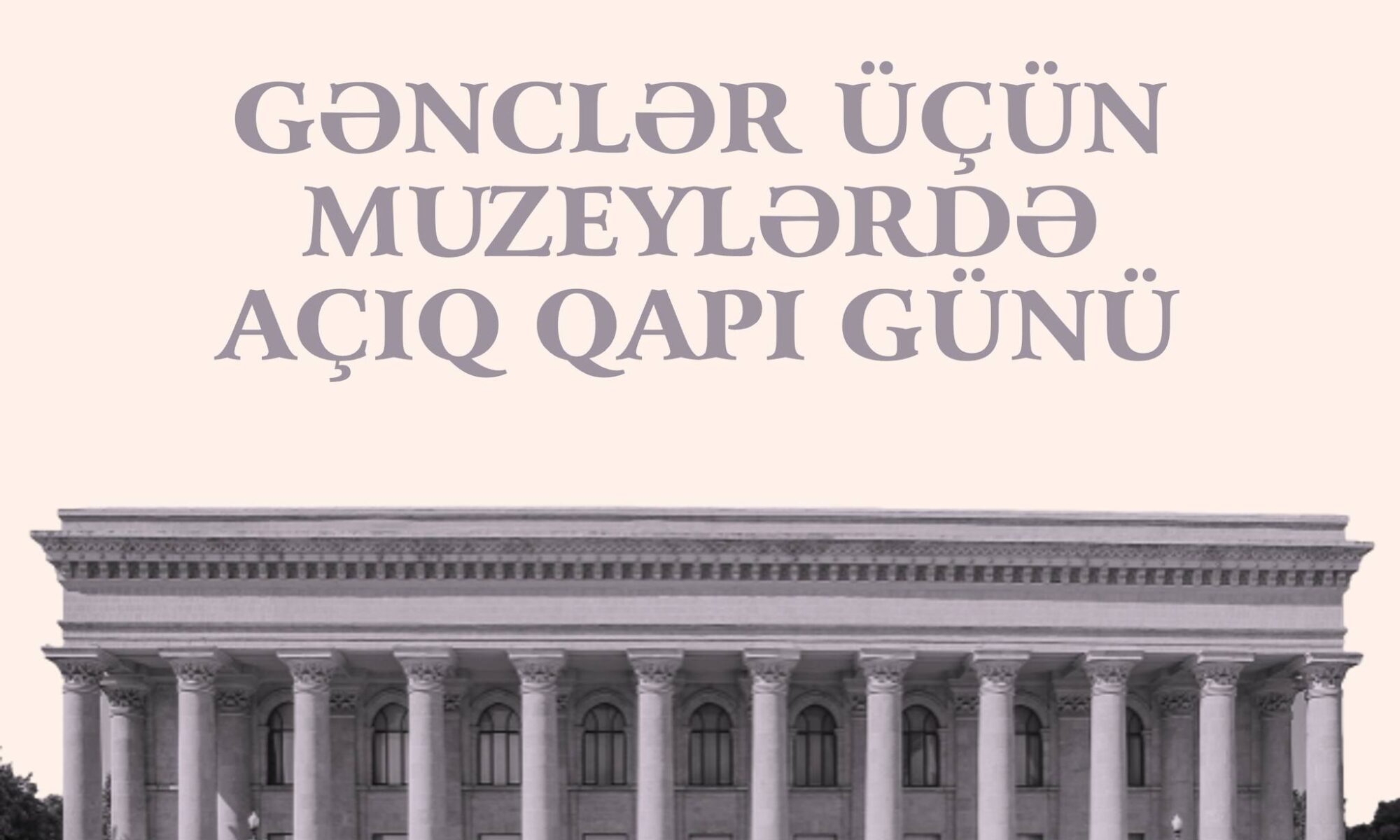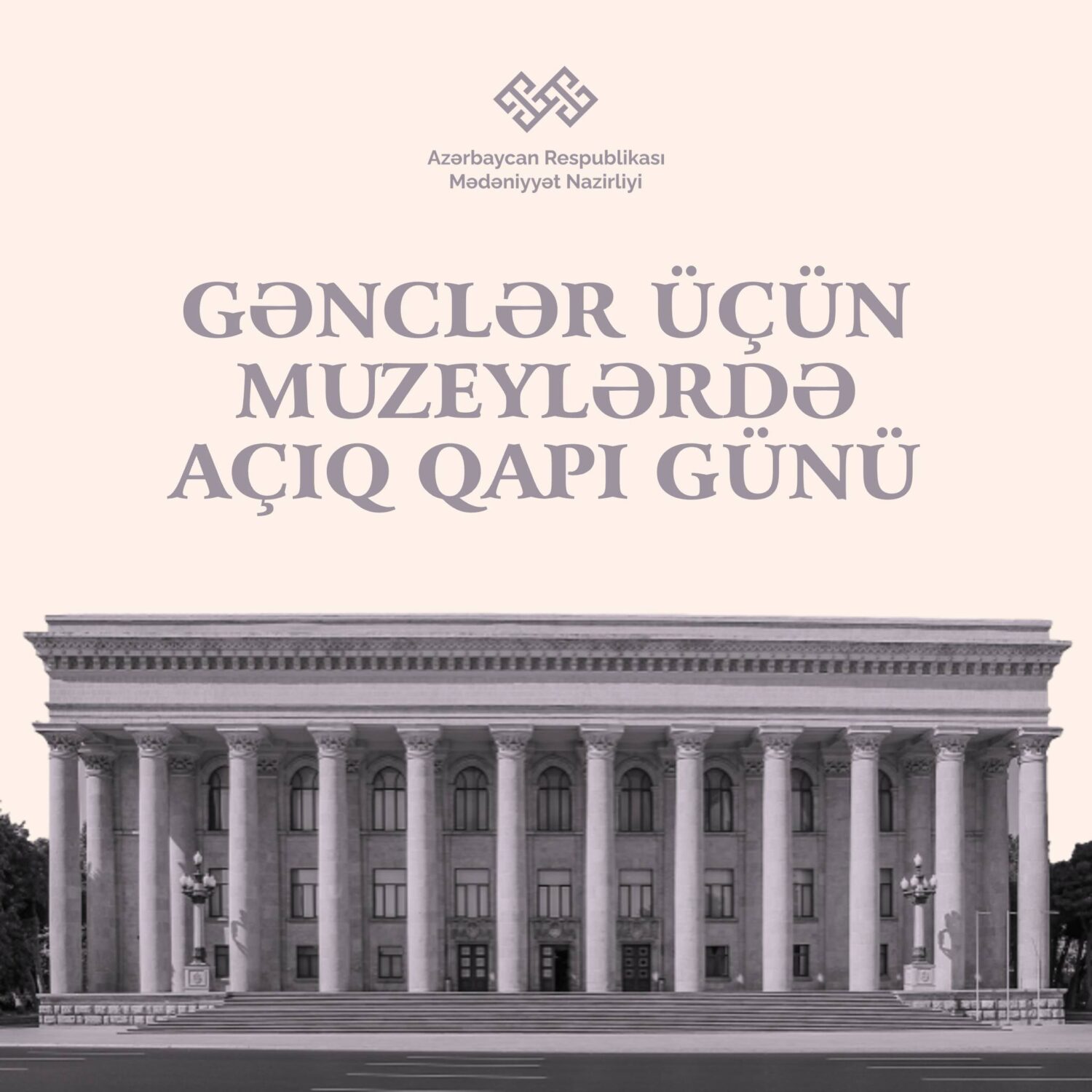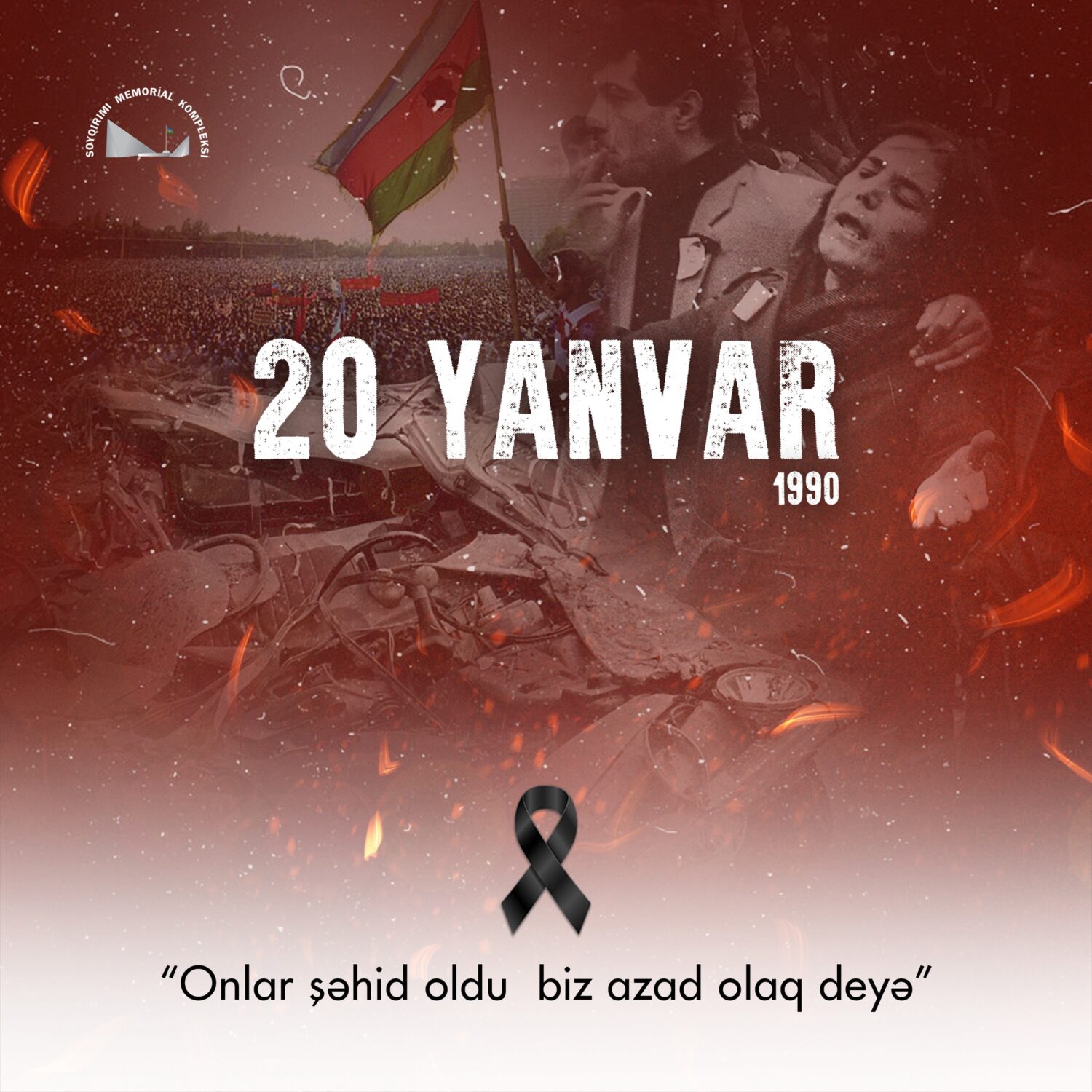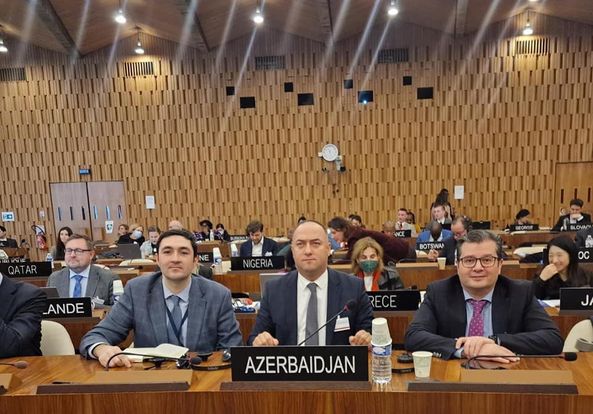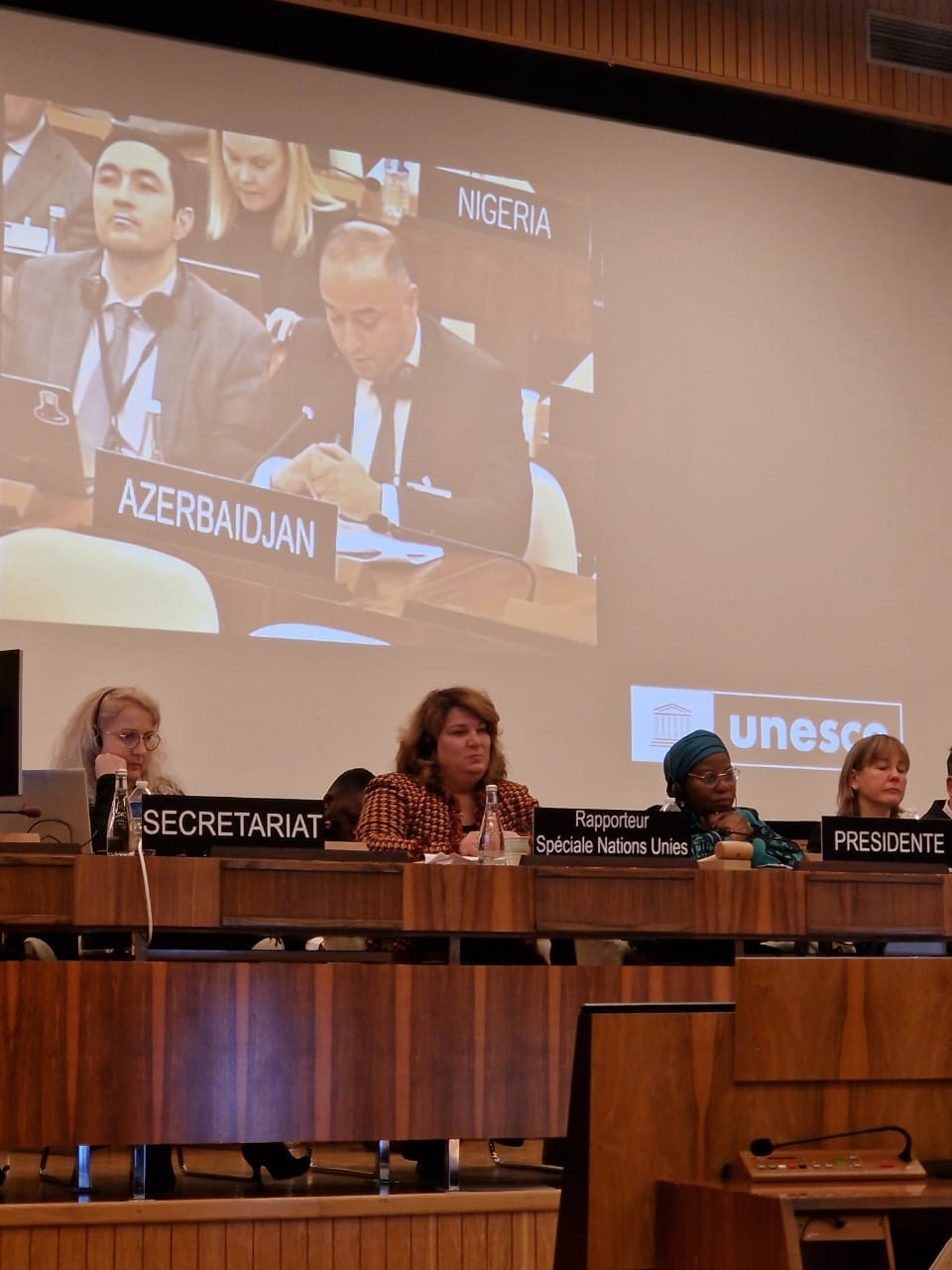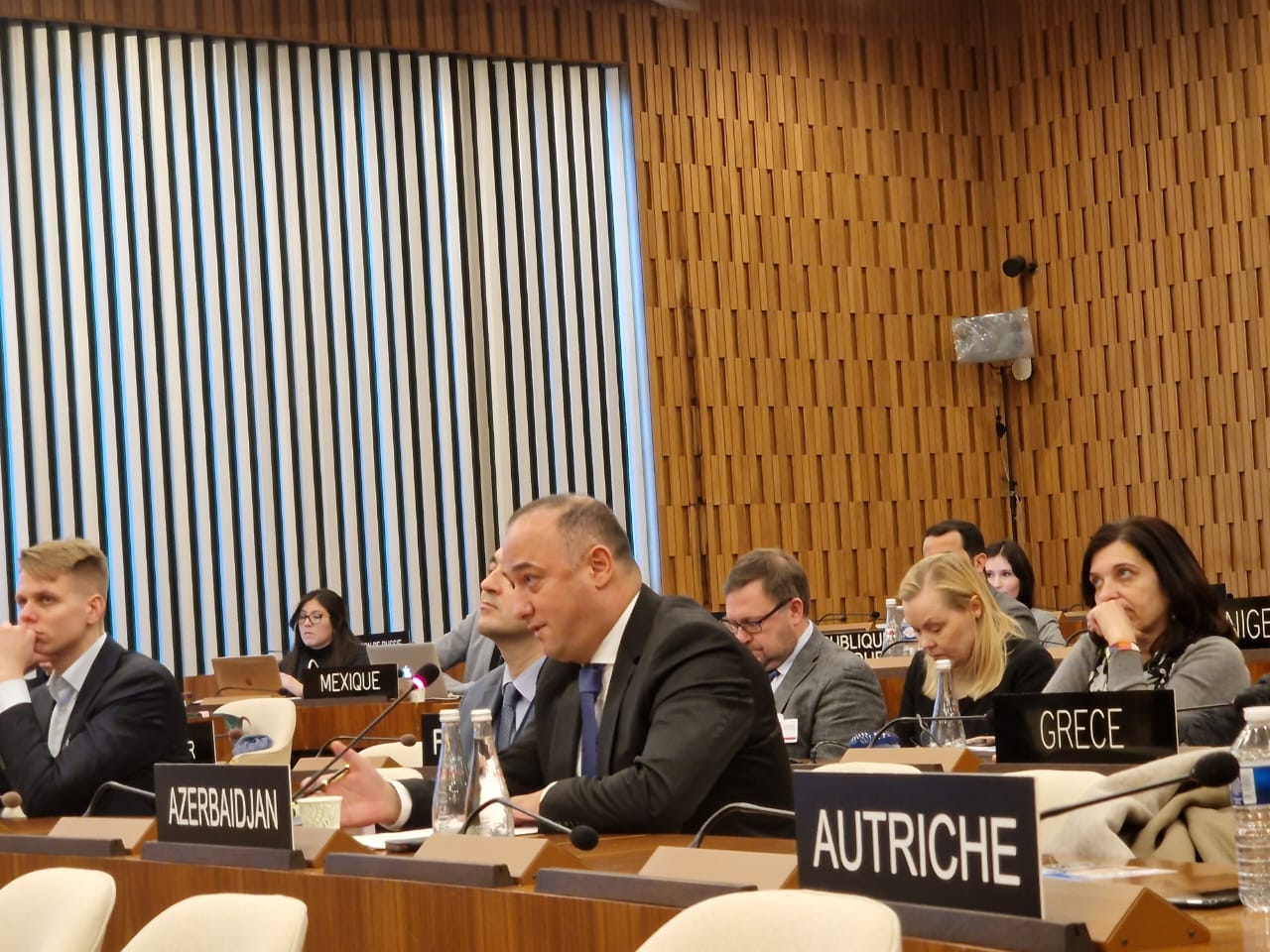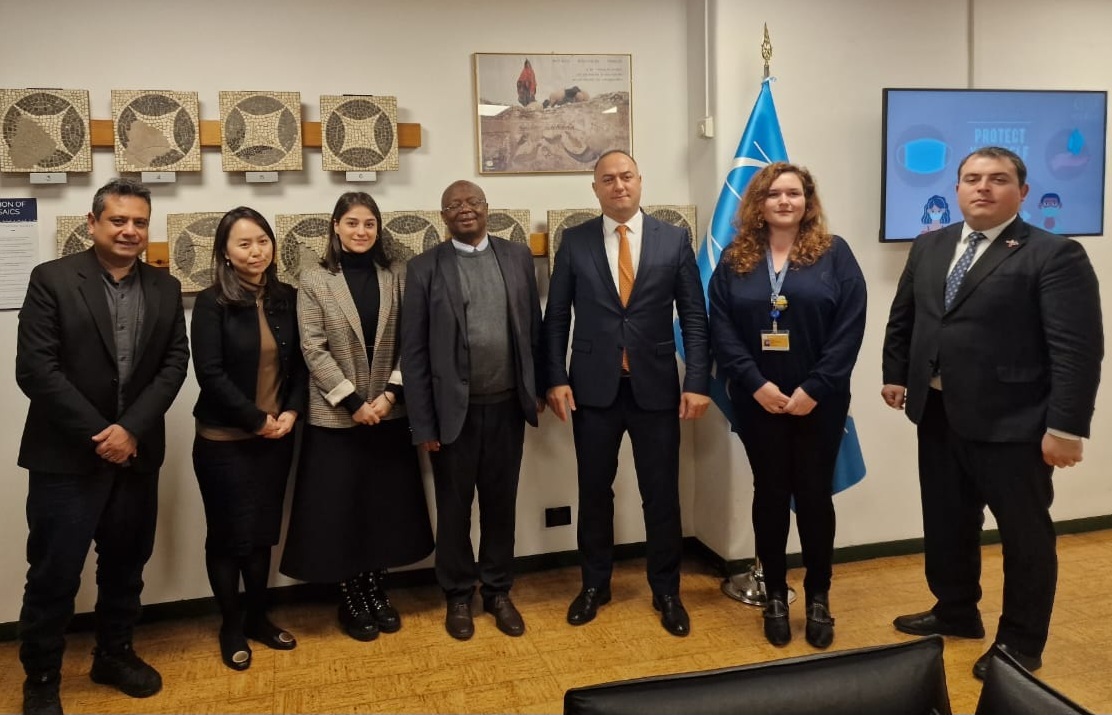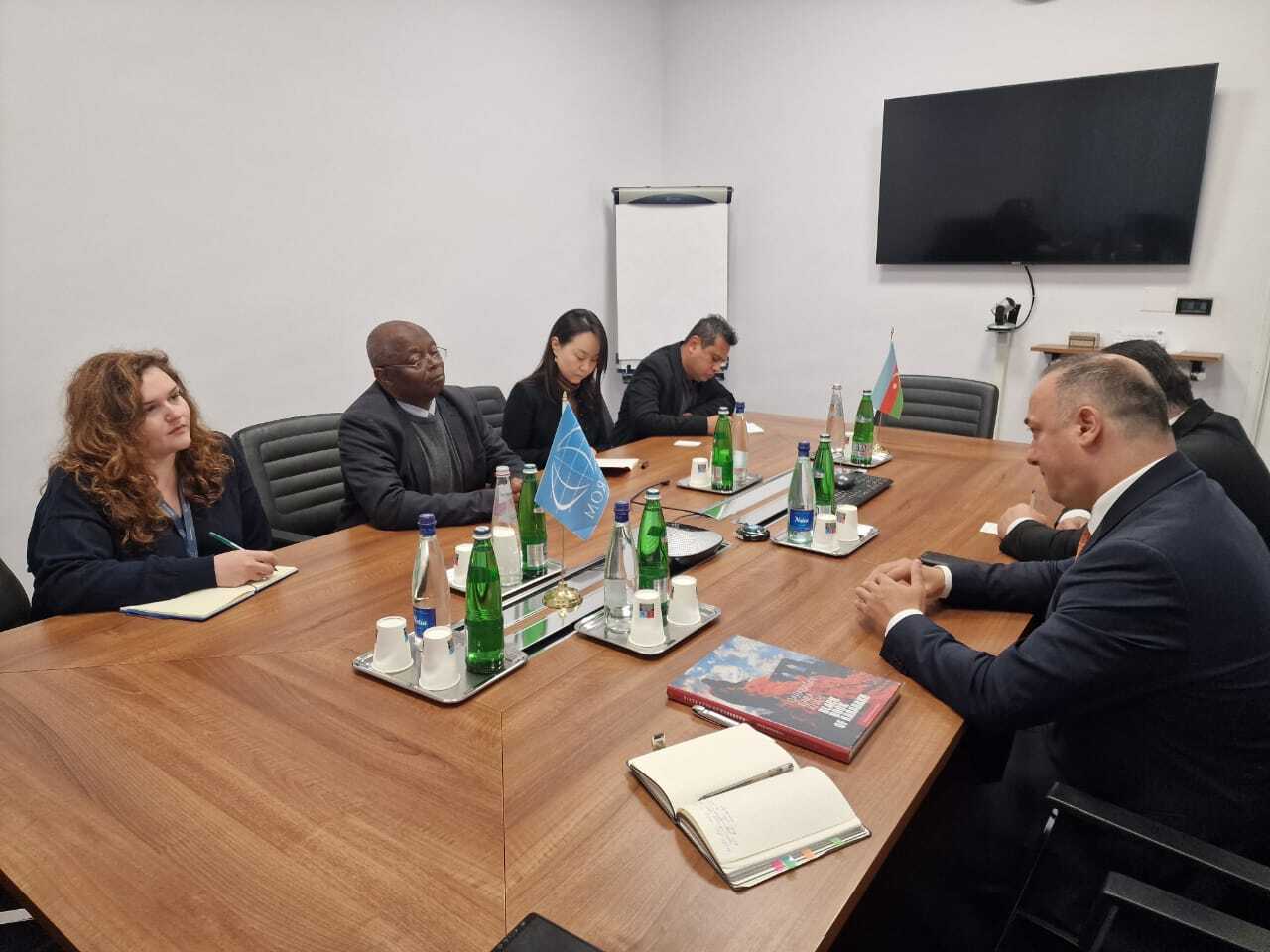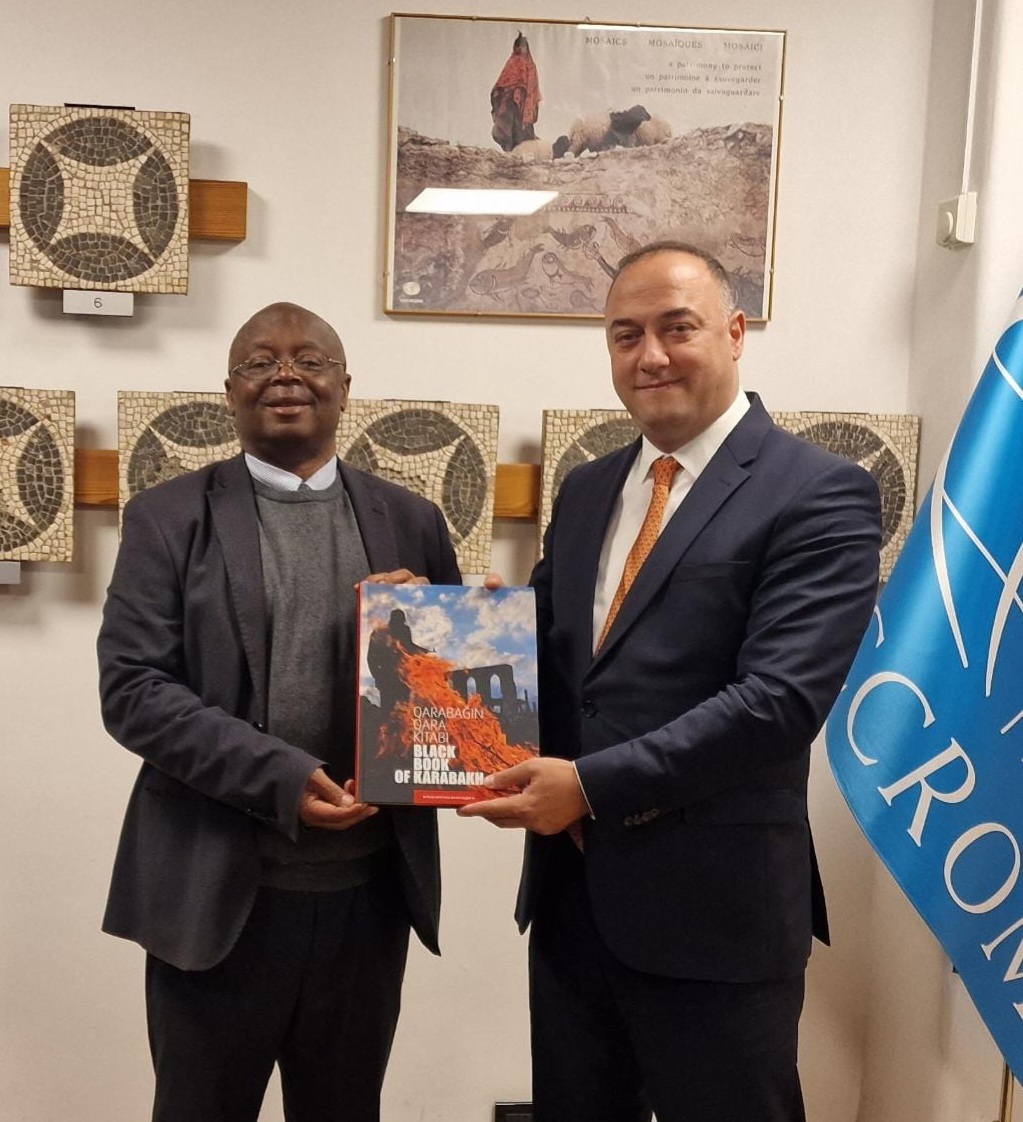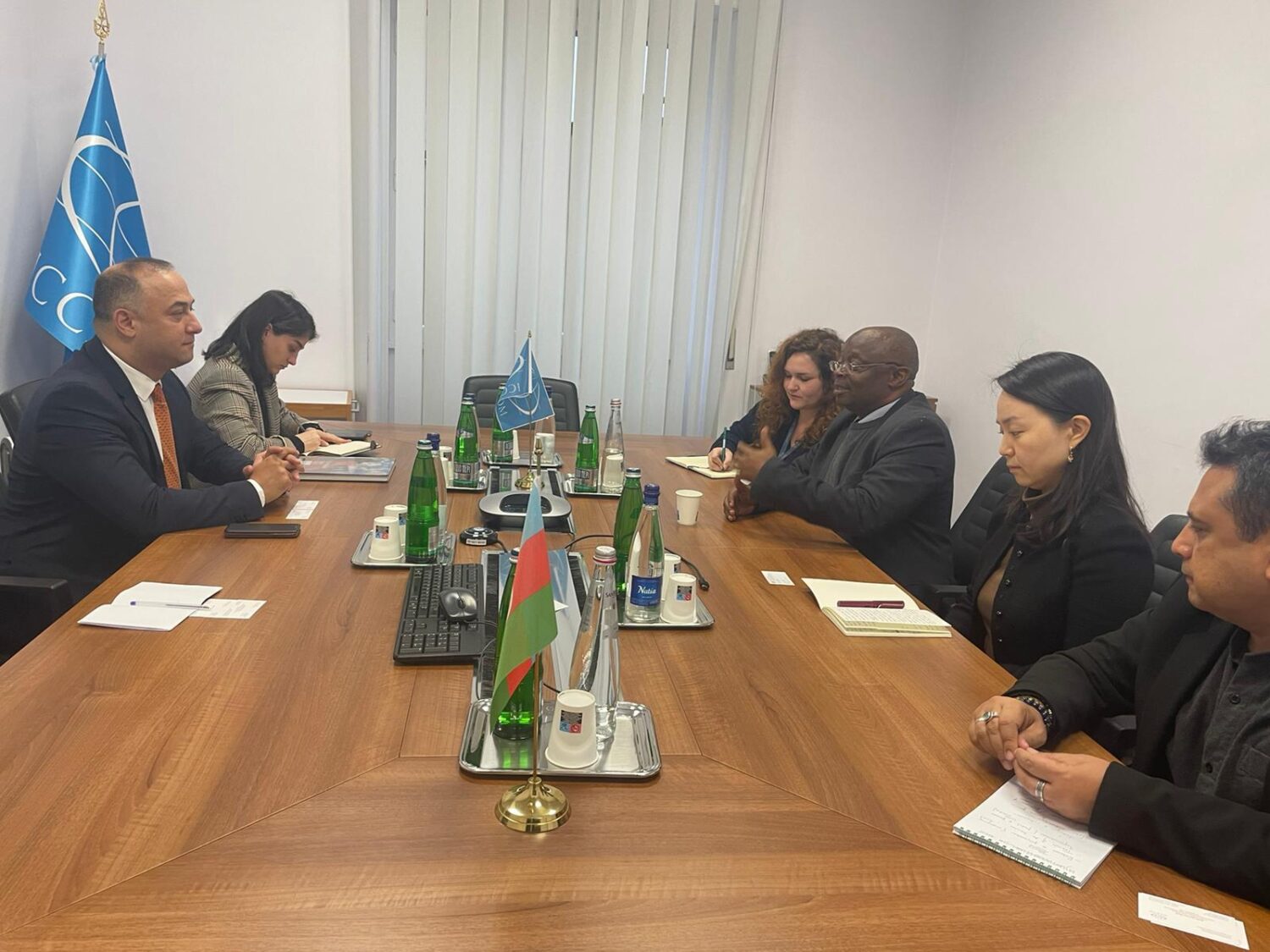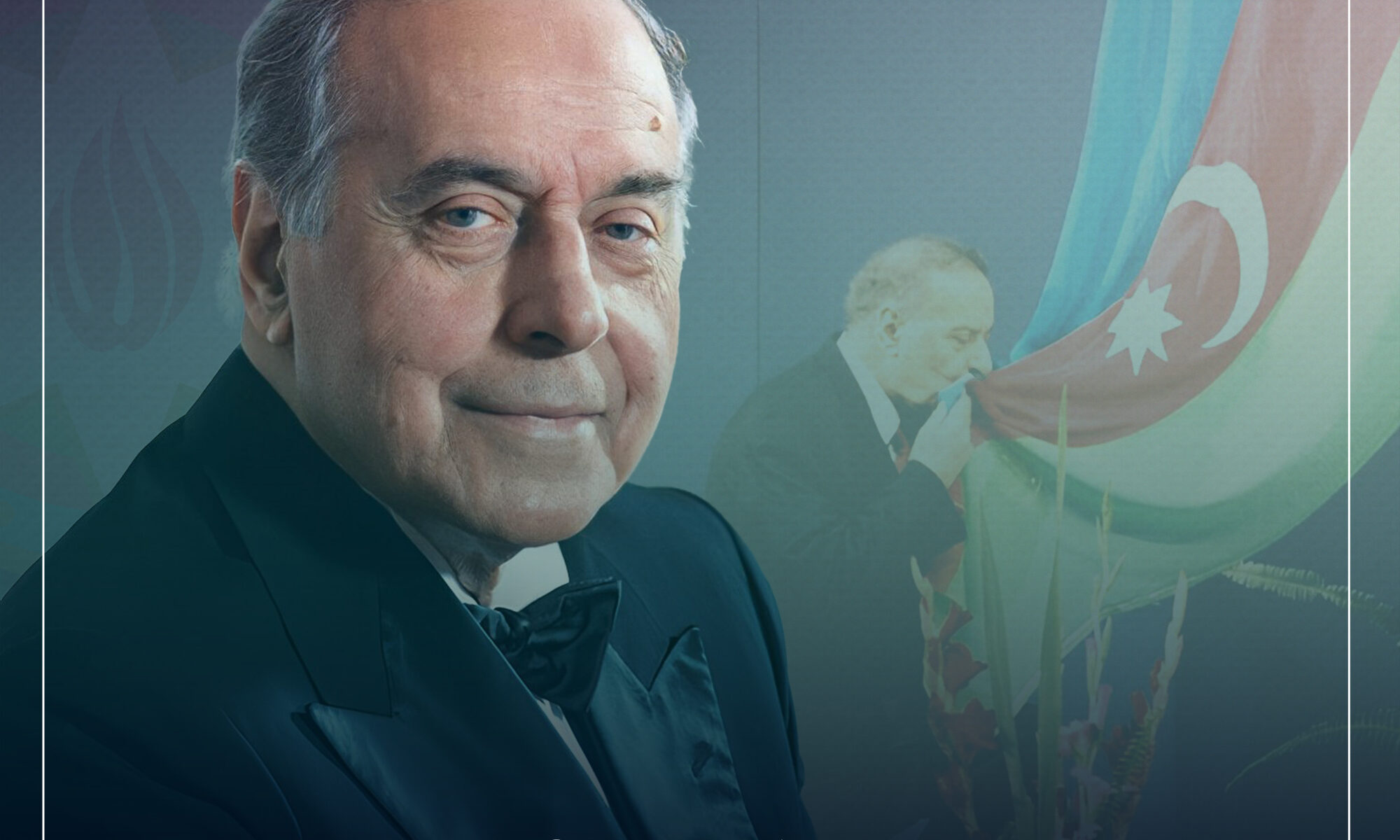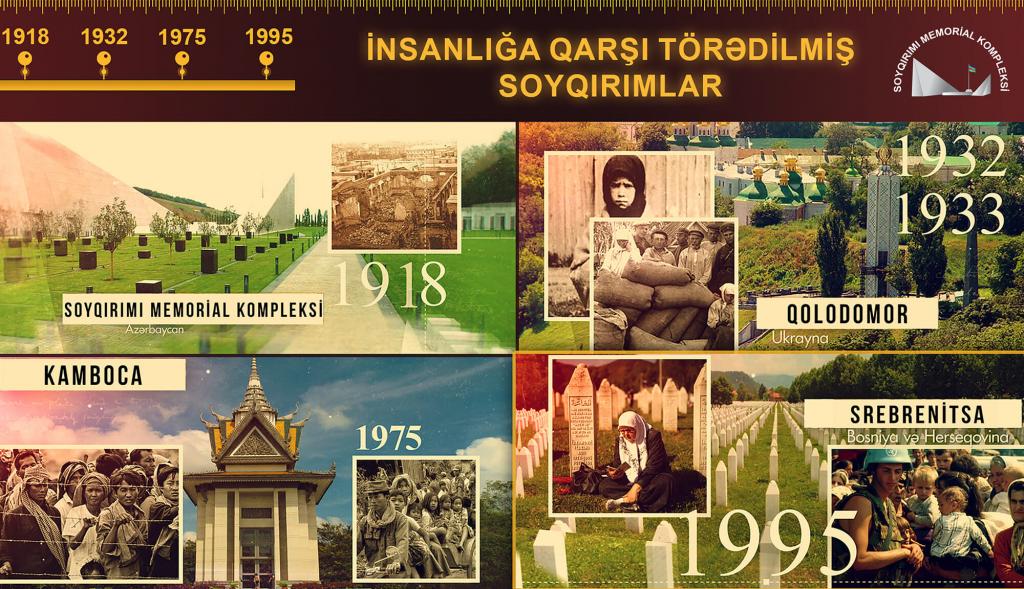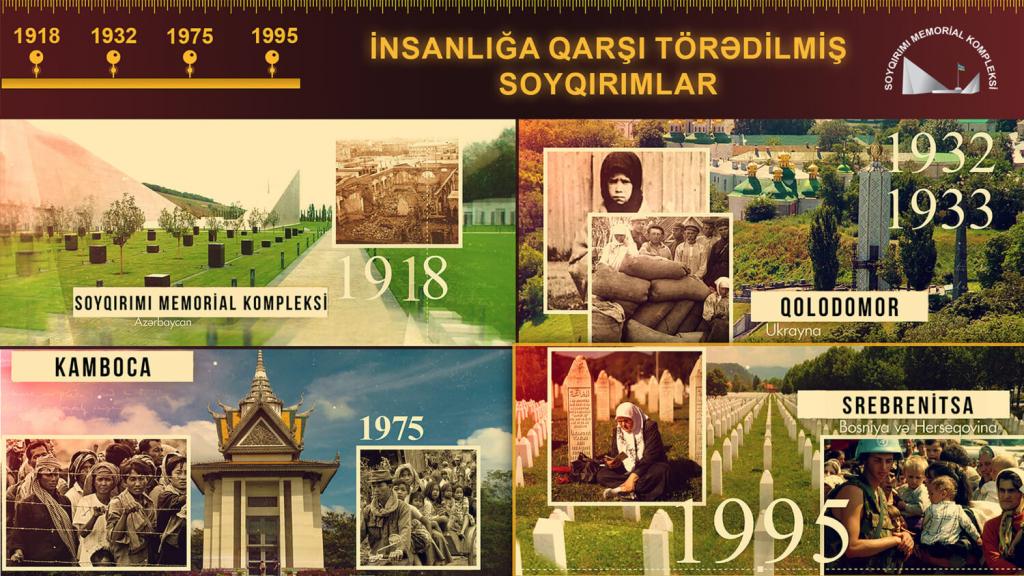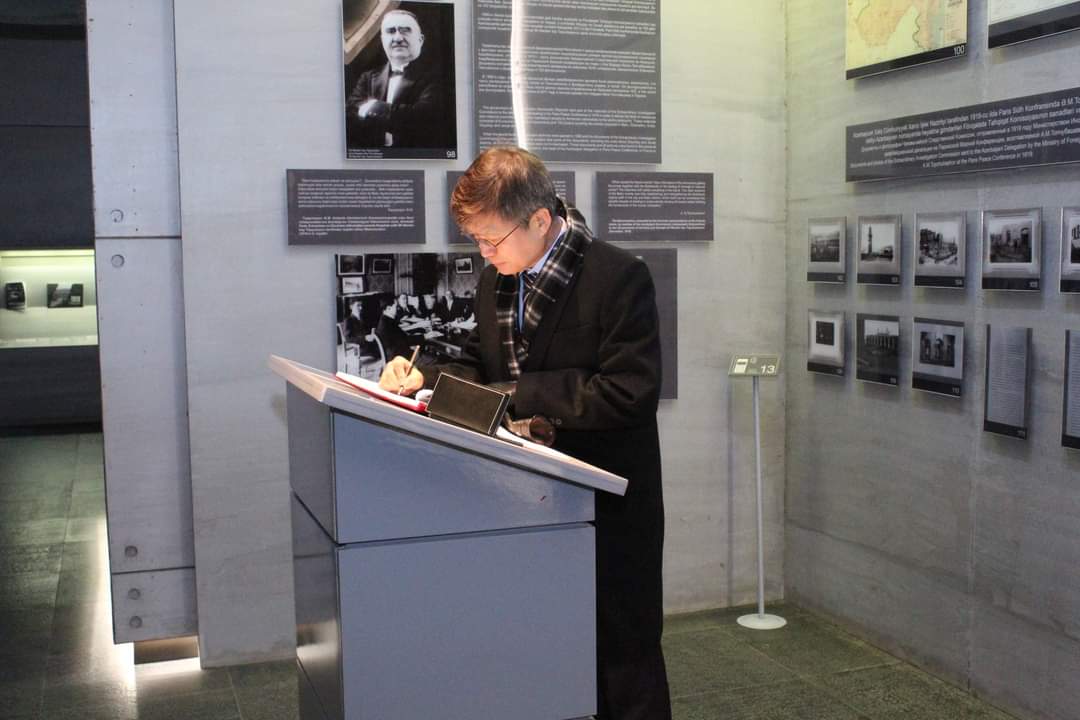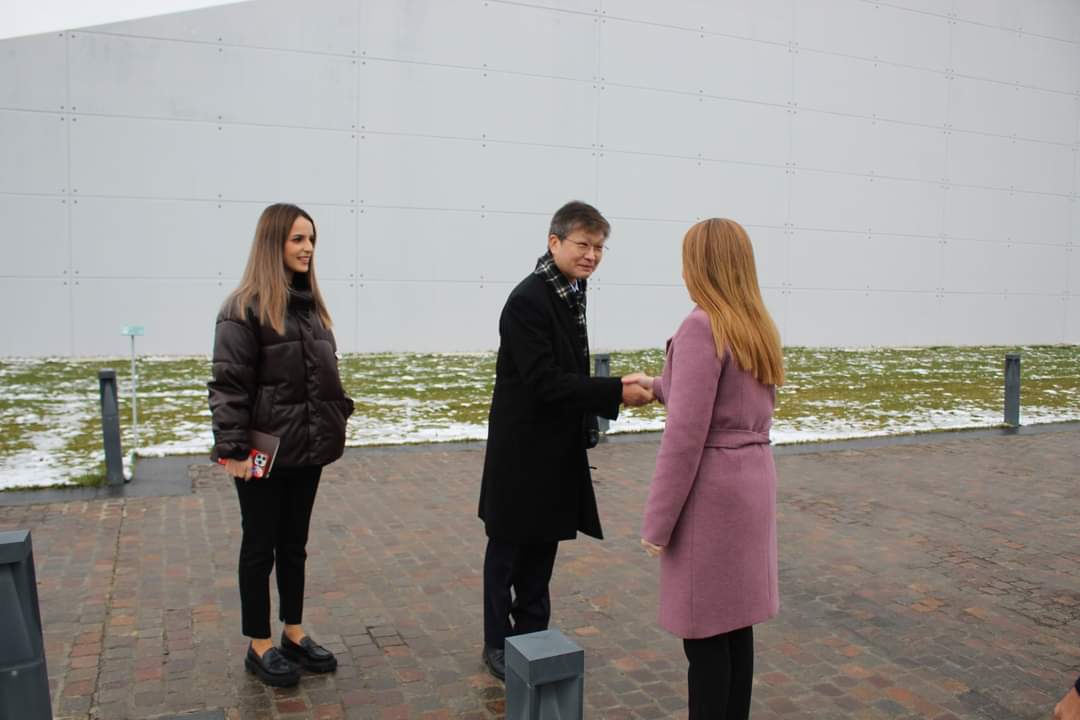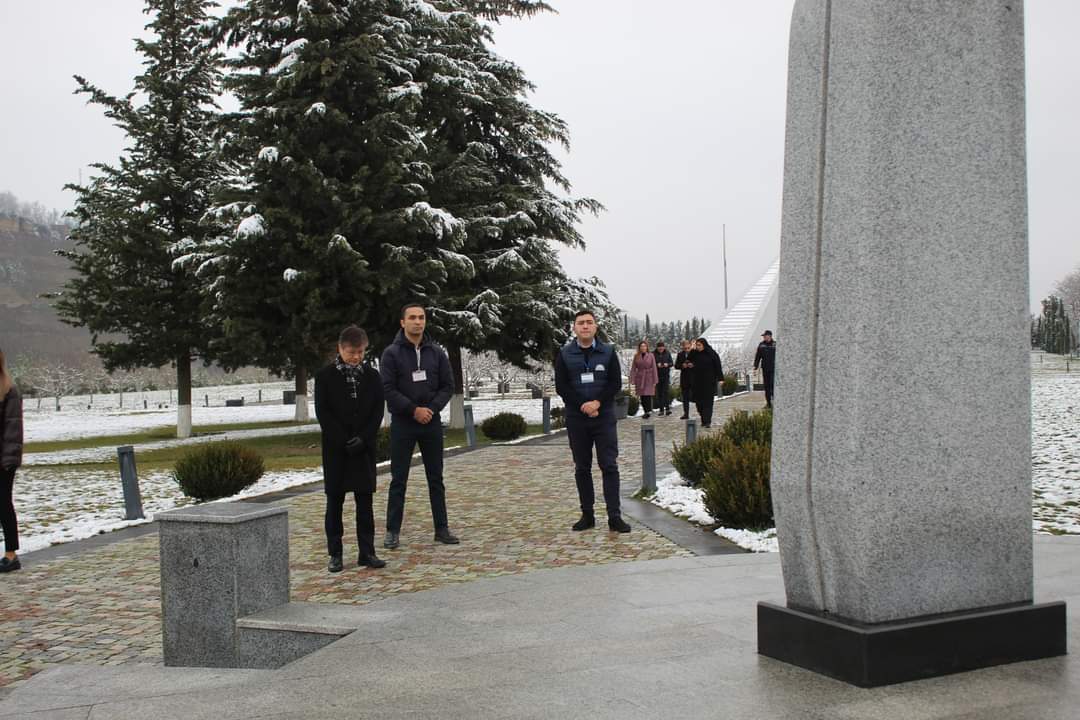Mədəniyyət Nazirliyi yanında Mədəni İrsin Qorunması, İnkişafı və Bərpası üzrə Dövlət Xidmətinin rəisi Azad Cəfərlinin rəhbərlik etdiyi nümayəndə heyəti İtaliya və Fransaya səfər edib.
Dekabrın 12-də başlayan səfərin məqsədi Romada yerləşən Mədəni Mülkiyyətin Mühafizəsi və Bərpasının Öyrənilməsi üzrə Beynəlxalq Mərkəz (ICCROM) arasında əlaqələrin müxtəlif istiqamətləri üzrə fikir mübadiləsinin aparılması, gələcək əməkdaşlıq perspektivlərinin müzakirə edilməsi, həmçinin UNESCO-nun baş qərargahında (Paris) keçiriləcək Silahlı münaqişə zamanı mədəni sərvətlərin qorunması üzrə Komitənin 17-ci sessiyasında iştirak etməkdir.
Səfər çərçivəsində dekabrın 14-də Azad Cəfərli Roma şəhərində lCCROM-un baş qərargahında təşkilatın baş direktoru Vebber Ndoro ilə görüşüb. Görüşdə Azərbaycan Respublikasının İtaliyadakı Səfirliyinin ikinci katibi Rüstəm Bayramov, Dövlət Xidmətinin baş mütəxəssisi Nəzrin Məmmədova, proqram meneceri Eugene Jo, layihə rəhbəri Rohit Jigyasu, təşkilatın koordinatoru Anna Zeichner iştirak ediblər.
Dövlət Xidmətinin rəisi lCCROM və ölkəmiz arasındakı əməkdaşlığın inkişafı istiqamətində Azərbaycanda həyata keçirilən tədbirlərdən danışıb. İşğaldan azad olunmuş ərazilərdə tarix-mədəniyyət abidələrinin monitorinqi, inventarlaşdırılması, bərpa-quruculuq işləri və infrastruktur layihələrinin icrası haqqında məlumat verib. Post-münaqişə dövründə “Böyük qayıdış” tədbirləri çərçivəsində işğal zamanı dağıdılmış abidələrin qorunması və mühafizəsinə həssaslıqla yanaşıldığını diqqətə çatdırıb.
lCCROM ilə birgə mərkəz Azərbaycan olmaqla abidələrin bərpası və qorunması prosesinin idarə edilməsi, texniki, metodoloji bilik və bacarıqların artırılması üzrə Türkdilli dövlətlərin mütəxəssislərinin iştirakı ilə çoxşaxəli və uzunmüddətli təlimlərin təşkil olunmasının mümkünlüyünü diqqətə çatdırıb.
lCCROM-un baş direktoru Vebber Ndoro isə öz növbəsində ölkəmizdə səfərdə olarkən işğaldan azad olunmuş ərazilərdə, xüsusilə də Şuşa şəhərindəki dağıntıları təəssüflə seyr etdiyini qeyd edib. Baş direktor təlimlərlə bağlı Azərbaycan tərəfinin təkliflərini yüksək dəyərləndirdiyini bildirərək, belə təlimlərin təşkil olunması ilə nümunəvi fəaliyyət və təcrübənin əsasının qoyulacağına inamını ifadə edib. Bununla əlaqədar memorandumun imzalanması və uzunmüddətli əməkdaşlıq proqramının icra edilməsi fikrini dəstəklədiyini vurğulayıb.
Həm işğaldan azad olunmuş ərazilərdə, həm də bütövülükdə ölkə hüdudları daxilində yenidənqurma, inkişaf prosesi çərçivəsində proqramın Azərbaycan tərəfinin şərhlərinə, izahlarına, ehtiyaclarına uyğun olaraq, həmçinin mərkəzi Azərbaycan olmaqla və Türkdilli dövlətlərin iştirakı ilə həyata keçirilməsinin uğurlu nəticələr verəcəyinə ümidvar olduğunu bildirib.
Hər iki tərəfin dəstəklədiyi bu proqramın əlaqələndirilməsi məqsədilə görüşdə əlaqələndiricilər müəyyən edilib, layihələrin hazırlanaraq mübadilə edilməsi və bu addımların yol xəritəsinə uyğun olaraq yerinə yetirilməsi razılığına gəlinib.
Nümayəndə heyətinin səfəri davam edir.


